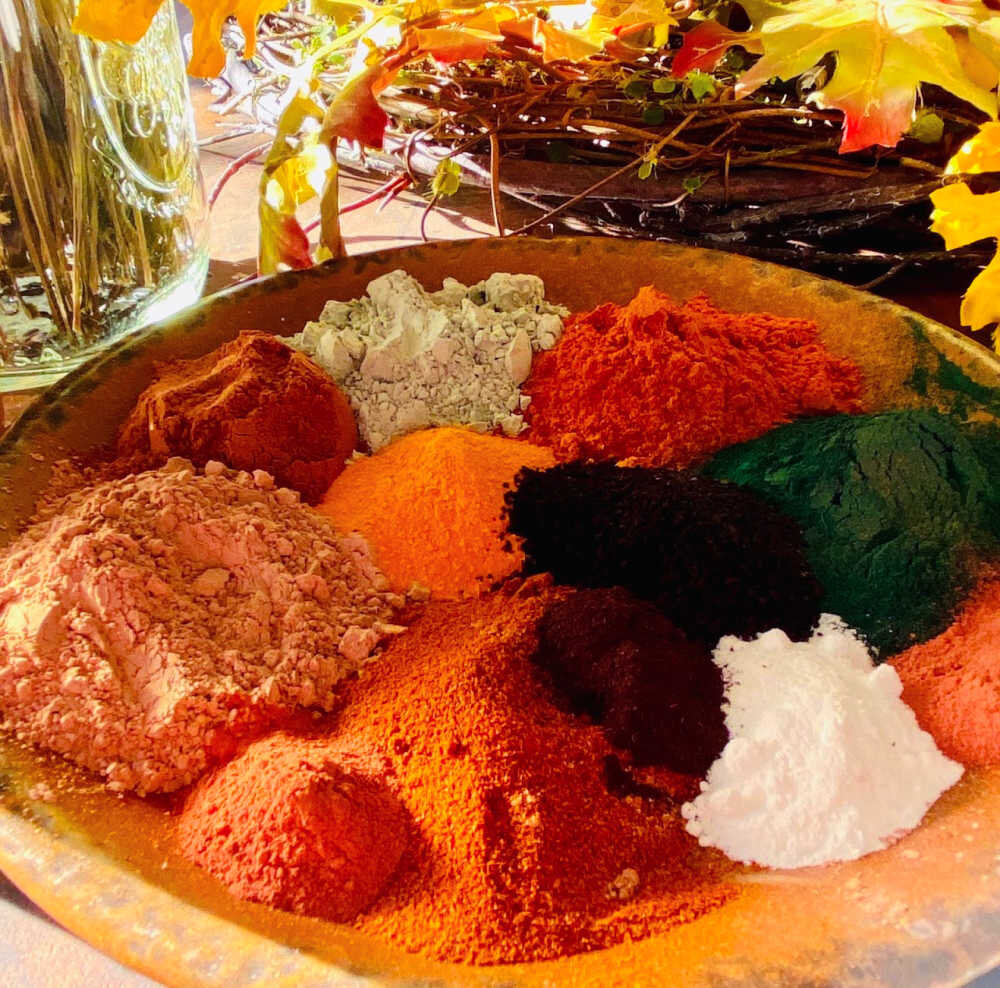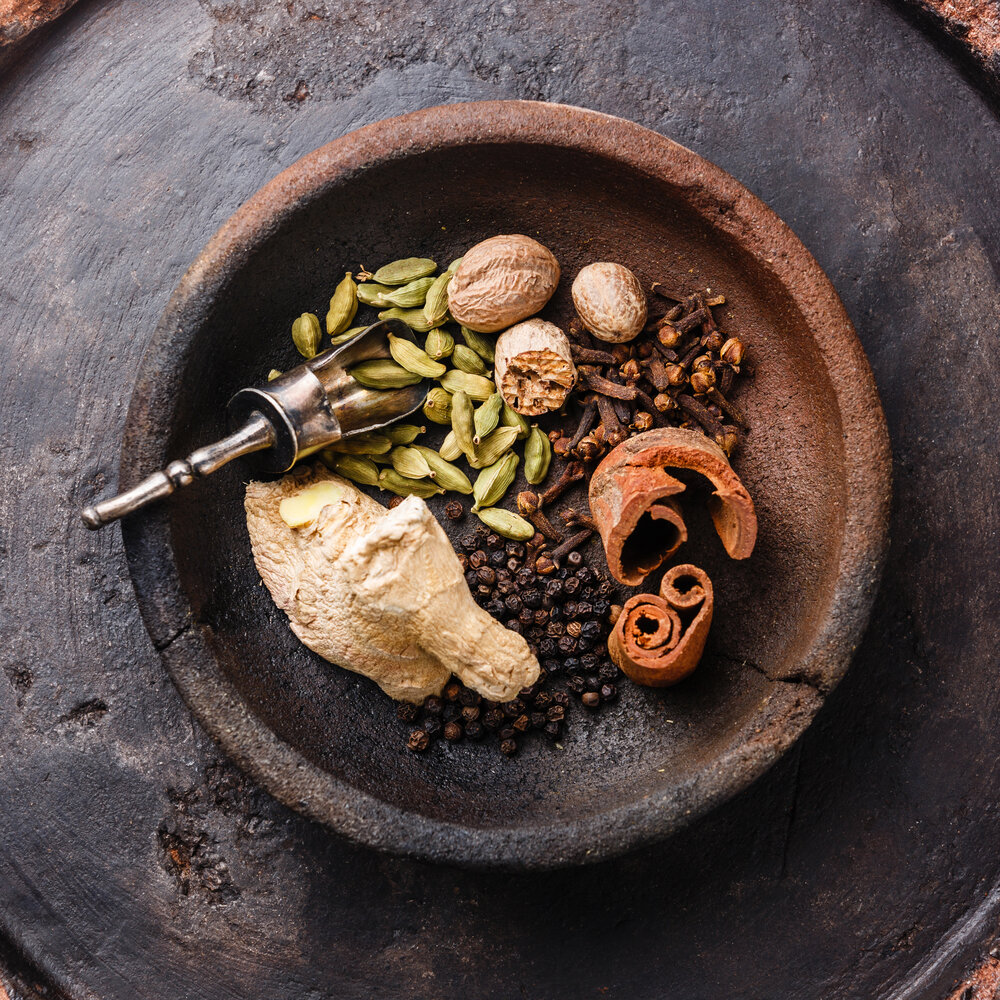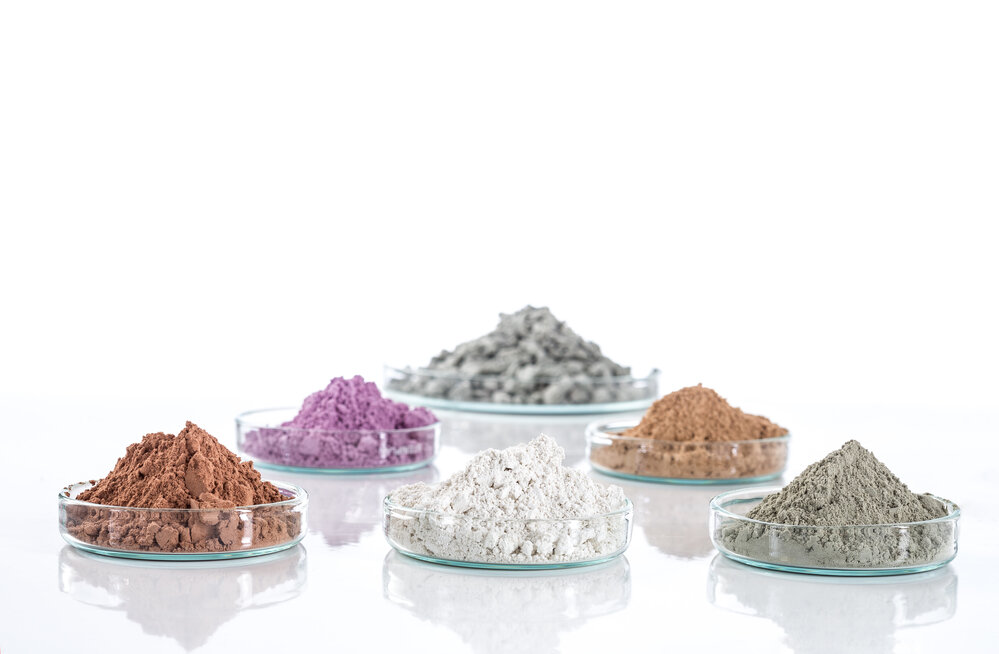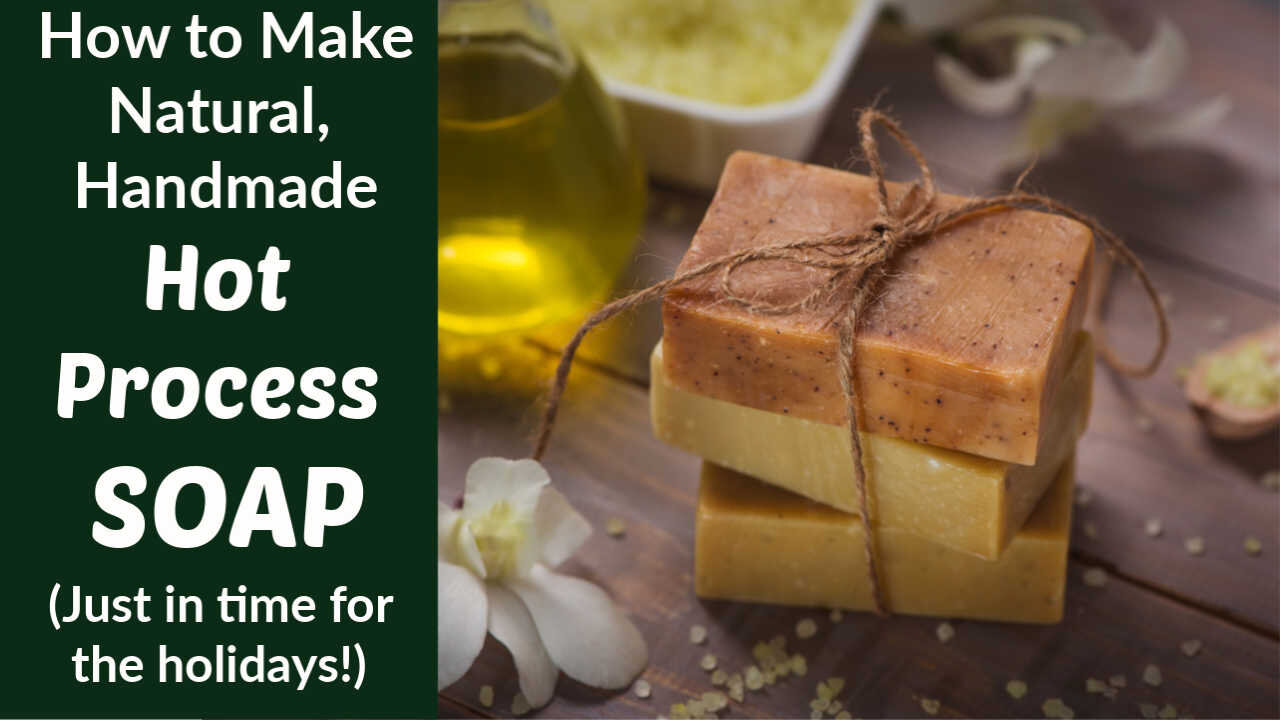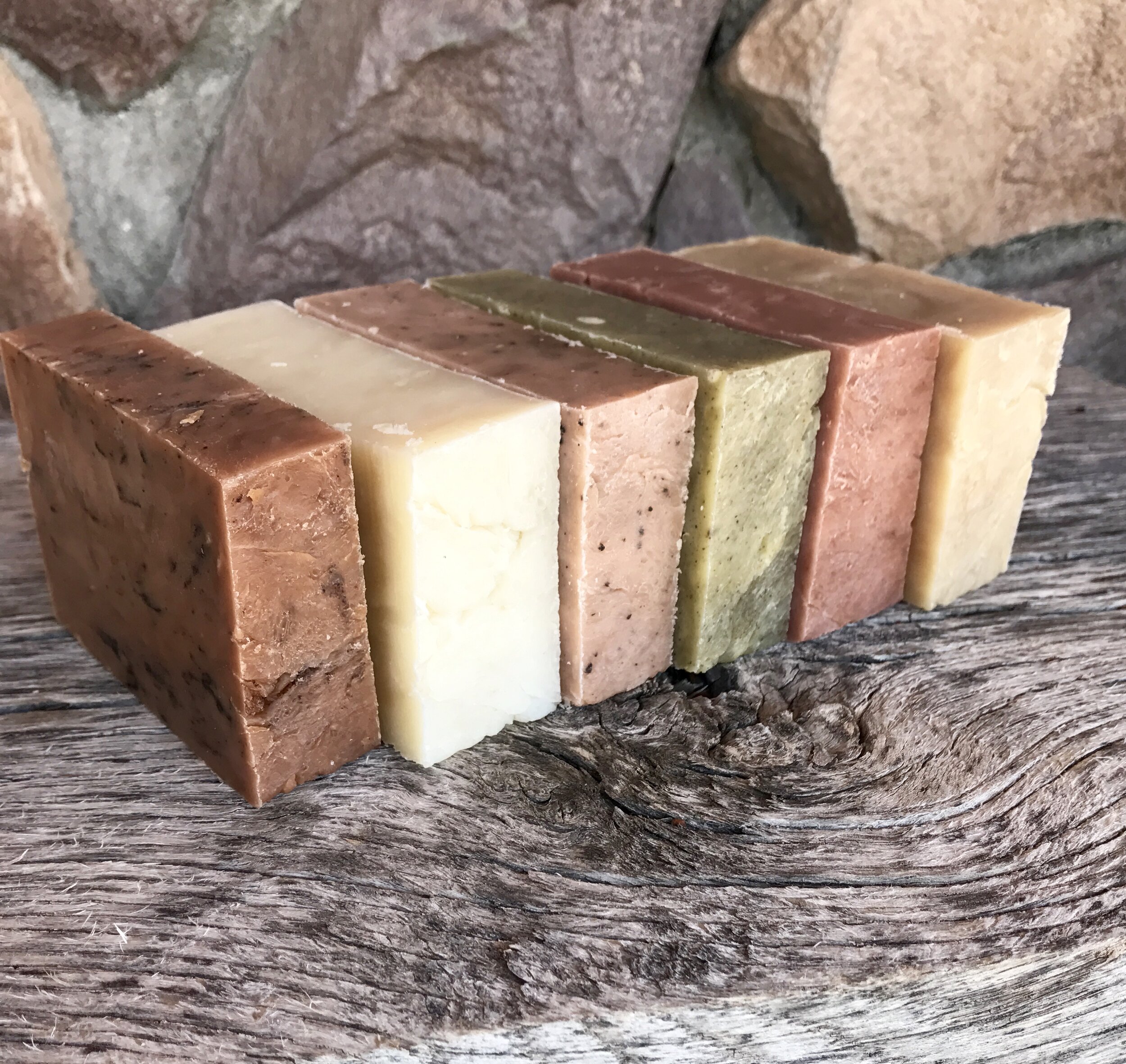How to Naturally Color Soap with Plants, Roots, and Clays...Natural Soap Coloring Techniques
NOTE: In this article, you’ll find out how to color your soap using only natural ingredients! These include things like herbs and plants, clays, and even some textures. Get creative with your natural, handmade soap!
When I first began making soap, I was just concerned about the soap lathering, moisturizing, and being natural. Toxic chemical-free soap was my number one objective. As I got better at soap making, though, my creative side took over, and I decided to begin experimenting with different natural plant and clay-based colorants.
We have tons of choices! More than I even realized.
I'm here to share with you what has worked for me in the realm of coloring hand made soap naturally. By the way, these colorants can be used in all methods of soap making: Melt & Pour, Cold Process, and Hot Process.
FTC Disclosure: This article contains affiliate links. If you click through and make any kind of purchase I may earn a small commission at no extra cost to you.
You can make so many different colors of soap using various herbs and clays from the earth! Find out how to use natural clays, herbs, spices, and other additives for color and texture in your own handmade soap. Making soap is so fun, especially if you are choosing natural ingredients. And they are way more healthy for you! #health #handmade #soap #natural #clay #herbal #howtomake #colors #healingharvesthomestead
By the way—-You might love to get a copy of my free Guide to Melt & Pour Soaps with Recipes, or perhaps you’d rather have the free Hot Process Soap Making Checklist?
Guess what?
You can have them both, plus all the other free resources in the Resource Library. Just complete the form at the end of the article to get the password!
Here are a few of the natural colorants I keep on hand and use when making soap. You can see the huge range of colors---and there are even more choices available to you too!
If you would like a couple of great tutorials with pictures and detailed directions on how to make hot process soap, you'll enjoy these choices: Article 1 and Article 2. These are excellent picture tutorials for the beginning soap maker!
How to Use Natural Colorants in Your Home Made Soap:
There are several ways you can color your soaps naturally using herbs and clays. Here are some ideas.
Herbs:
Plants from the earth are a wonderful way to color your soaps!
You can create teas, which can be substituted for a portion (or all) of the water in a soap recipe. You can also powder the leaves for a grainier look and add these directly to the soap batter, the lye solution, or the melted oils.
You’ll need to powder the roots, leaves, berries as finely as possible if you choose to use powdered herbs for your soaps.
I'll also use a fine strainer to get the smallest particles I can if I know the herb turns out on the coarse side (as in annatto---I have a hard time getting a fine powder). You may have darker speckles with some roots and berries, but I have found the leaves grind very well.
Also….some people just love more texture in their soaps!
Usually, I put the powdered herb into the oil part of the soap, before mixing to trace. However, you can also add it to the lye solution before mixing with the oils, to the finished, cooked soap, or right before mixing to trace.
The other option is to make an infusion/tea in the water portion of the soap making process. This will color the water, which will add color to the soap without the extra powders/speckles. You simply substitute the amount of tea for the same amount of water in the recipe.
If you want texture from herbs such as lavender, calendula, etc., you can add these at the end of the cooking time in hot process soap making. Or before you pour the soap into the mold in cold process soap making.
Beware, though:
You should expect most herbs you add to soap to turn a brownish color over time. Rarely do they retain their vibrant original color through the saponification process. Calendula is the only exception I've found so far for flowers. Nettle and alfalfa will keep the soap a nice green color.
Ready to make your own natural, beautiful handmade soap? Click here to start today!
When using herbs for soap colorant, you’ll have to ground them into a fine powder. I just use a good spice grinder for this.
Clays:
I love using clays as colorants. They add another dimension to your soap! Clays detoxify your skin, and they add a wonderful "slip" to soaps. A more slippery soap makes for excellent shaving!
Clays also make for a denser and harder soap, as well. They also help the soap last longer.
My Favorite Plants and Clays for Coloring Soap Naturally
This is certainly not a complete list, as there are MANY herbs and clays to color your soaps. These are my favorite ones, though, at least so far!
Red and Pink Colored Soap:
Madder Root: Produces a range from pinkish to red, depending on how much you use.
French Pink Clay: A light pinkish brown, actually quite pretty. You can see this color highlighted in my Soothing Chamomile Soap recipe.
Morrocan Red Clay: Provides a lovely dark red brown, depending on the amount used. Here is this color used in my Frankincense & Myrrh soap recipe (I used only a tiny amount, so you can see how it looks this way. Generally, it will be much darker red.)
Kaolin Rose Pink Clay: Also a light pinkish brown soap, similar to French Pink Clay, and gentle on your skin.
Green:
Nettle Leaf Powder: Using Nettle leaf is my very favorite for a bright, vibrant green. Take a look at my Third Eye Soap with Spearmint & Frankincense to see how nettle powder looks.
Spirulina: Makes a nice green-blue color
Green Clay: Makes a calming light green color. You can see how it looks in my Dead Sea Mud Soap recipe.
Henna: I have not actually tried using Henna in soap---only my hair. I hear it makes a nice olive green/brown soap.
**You can find out more about my hair dyeing with henna experiments here.
Yellow and Orange:
Calendula Petals: Using Calendula is my favorite way to make yellow soap. I infuse the petals in the almond oil or olive oil for about 6 weeks. The oils turn a beautiful golden yellow--and no extra colorant is needed in the soap! Plus the Calendula is extremely softening and soothing to the skin.
You can see how the yellow color looks in my hot process soap tutorial.
Annatto Seed: You'll have to grind this to as much of a powder as you can, then strain for just the finest particles. A tiny bit of this goes a long way! Color ranges from light yellow all the way to striking orange with more added!
Paprika: Paprika makes a darkish orange color. It's quite pretty, and great in the Fall!
Pumpkin Puree: I love using pumpkin in my soap making, especially in the fall. You can find my Pumpkin Spice Soap recipe here.
Safflower Powder: Another way to make a rusty orange bar of soap
Turmeric: Turmeric makes a nice yellow soap. It's not as pretty a yellow as Calendula, in my opinion, but I've used it often and it turns out nice!
Purple and Blue:
Alkanet Root: If you buy it unpowdered, just grind it in your spice mill! This makes a wonderful very dark purple bluish color. Go easy on it! A little goes a long way. Also, it may turn a grayish color depending on the pH level, but it's not unpleasant.
Indigo: Gives a deep blue color. It will stain, so be careful—-and a little goes a long way.
Blue Cornmeal: I haven't tried this yet, either, but I hear it turns a purplish-blue to brown color.
Brazilian Purple Clay: This is a hard to find clay that creates a lovely violet color.
Browns:
Cinnamon: Cinnamon makes a nice brown color. You can also swirl it in at the end. Caution: Cinnamon may be irritating to the skin for some people.
Clove: Makes a darker brown color.
Coffee: Ground fine, infuse in the oils as they heat. It will give you speckles in your soap, but will really scrub your skin well!
Cocao Powder: Will make a lovely brown color—-
You can see how paprika color looks with the brown spices used for texture and excitement in my super popular Sexy Wild Man recipe!
Black:
Activated Charcoal: Hands down the best for making a black soap! If you don't use enough, though, it will be a gray color. Activated charcoal is purifying to your skin, too!
Clays from our good earth are perfect additions for your soap making projects!
Learn everything you need to know to make your own hot process soaps with confidence in this eBook! NOTE: This eBook is a FREE BONUS if you purchase the Natural Soap Making course!
***Don’t forget to complete the form at the end of the article so you can get access to the free resource library and pick up your free eBooks and guides!
Find out everything you need to know about making soap in the Natural Hot Process Soap Making Course…includes videos, eBook, and recipes for various colors, textures, and scents! Plus, you’ll learn how to customize your own soaps.
But now, a note on "natural…..”
What Does Natural Really Mean?
These days, when you hear the word, "natural," you really do need to take care. “Natural” can be only a small portion of a product, since it’s a tiny amount of “natural” the government requires for so-called natural labeling.
It can also mean that it was actually made synthetically in a lab, but the chemicals match up with the real thing. This is not natural, my friend. It’s deceptive and unsafe.
Do you like shiny micas for coloring soaps and using in body care? I’m sorry to tell you this (and I was sorry to find this out too) that they are NOT natural, even though mica is found naturally in the earth. The brightly colored fluorescent and shiny colorants people often “ooh” and “ah” over are not natural at all.
So how do you know if what you choose to use (or buy) for that matter is the real natural deal?
Well, I have solved that problem for myself by simply using organic plants (roots, seeds, leaves) that I powder myself or purchase powdered, clays that actually come from the earth and are minimally (or not at all) processed, and powders such as activated charcoal---which is no longer actually a plant but does come from wood.
The best herbs for my soap making actually come from my own garden and backyard. Plantain, comfrey, calendula, lavender, violets, etc.
Basically, if I know where it came from exactly, and I know what it is, and especially if I grew it myself—-then I feel good about using it.
There are some colorants that are sometimes touted as "natural," but which I personally choose to refrain from using because they have crossed the line somewhere in the manufacturing process.
These include micas, anything colored with wax, and anything else that has been processed in chemical ways or are lab manufactured. Those brightly colored, fluorescent soap colorants you see? NOT natural.
Natural colorants are going to ALWAYS have a softer, more muted tone.
And I think they’re beautiful.
You can get so many lovely colors in your natural, handmade soap…. beautiful, muted, colors from the earth.
Start learning herbalism now! This free 5-Day Herbal Medicine Making and Foundations course will set a strong base for your herbal learning, including easy home remedies you can make right away!
Final Thoughts on Coloring Handmade Soap Naturally
There are so many ways you can use plants and clays to color your handmade soaps. Teas, powdered herbs, and infused oils are some of the ways you can get herbal color or color from the earth (clays) into your handmade soaps.
It’s exciting business when you start learning about all the things you can do to create lovely natural and healthy soaps.
I’d love to know your question, thoughts, and any ideas you have that I didn’t include so please leave a comment in the comments section.
That's it for coloring your soap naturally! You might also enjoy these related soap making articles:
Soap Making Mistakes You Don’t Want to Make
The 20 Best Essential Oils for Scenting Your Soaps Naturally
Cold Process vs. Hot Process Soap Making: Which is Better?
And there are many more on the website, so head over and explore around!
Hey! I have a free eBook for you! It’s a Guide to Melt & Pour Soap Making and includes recipes and ideas for things to try. If you’d like a free copy, just complete the form below. You’ll get immediate access to the FREE Healing Harvest Homestead Resource Library! The library contains TONS of free, printable resources for your natural soap making, body care, and self-reliance projects!
Enjoy!
Hugs, Health, and Self-Reliance!
Heidi
P.S. Don't forget to sign up for the Newsletter! :-) You’ll get access to the Resource Library, and you’ll never miss a thing! Just complete the form below for the password to the library:
Here are just a few of the clays and herbal powders I have on hand….lots of choices! They are not expensive, and once you have them they last a long, long time!
Are you making handmade soap for your family and want it to be as natural, clean, and toxin free as possible? The colorant you decide on is so important. If you want truly natural handmade soap, find out the best plants, clays, and textures from the earth to use to color your homemade soap. You need this list! #howto #colorsoap #handmadesoap #naturally #naturalsoap #soaprecipe #makesoap #healingharvesthomestead


